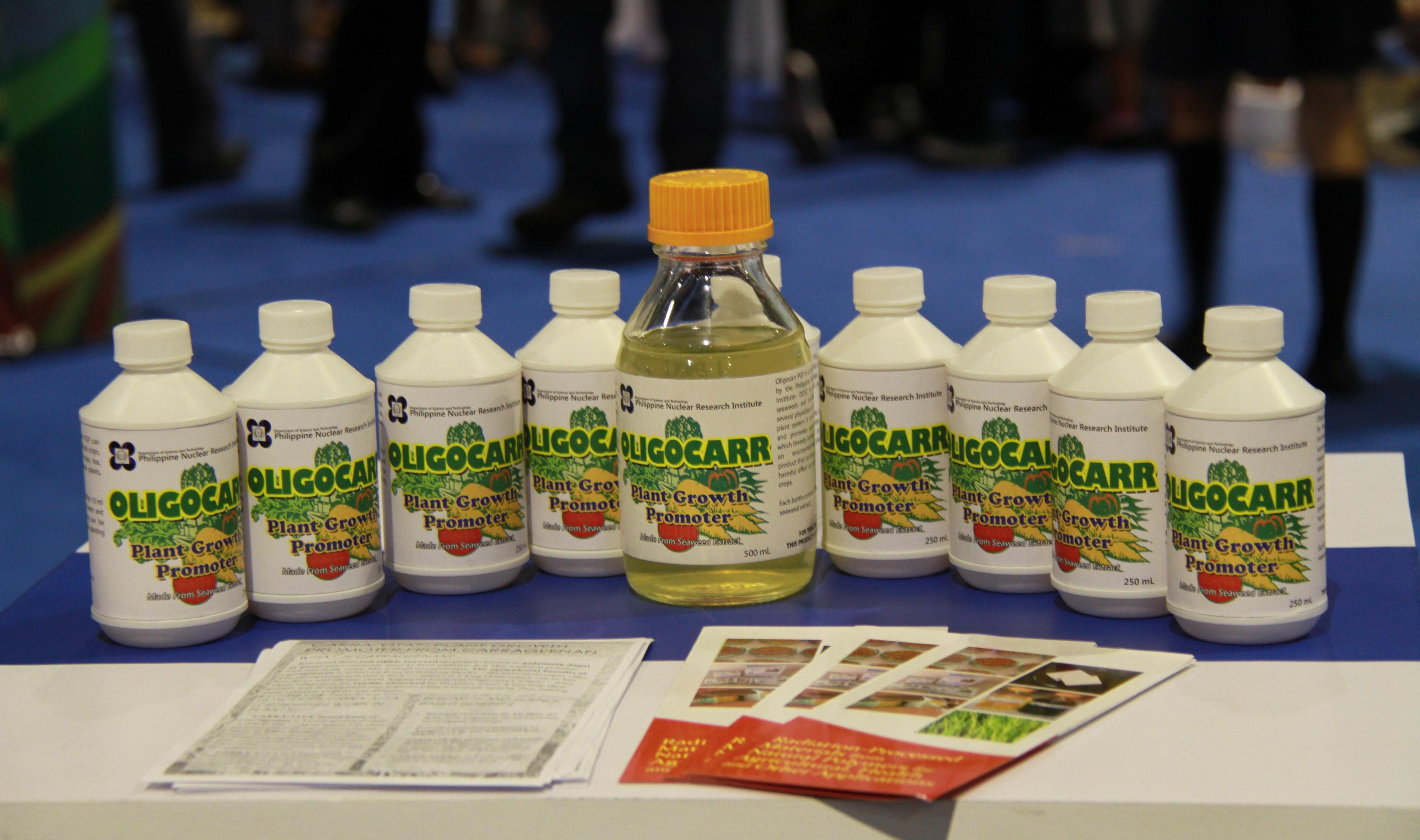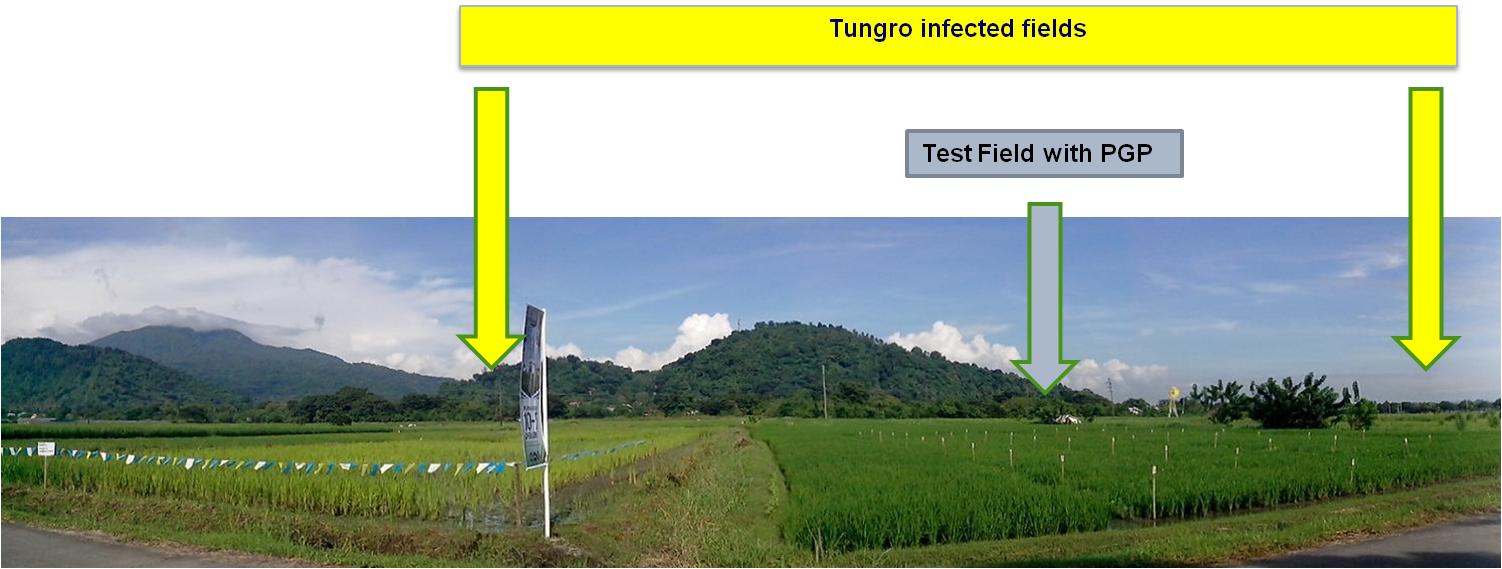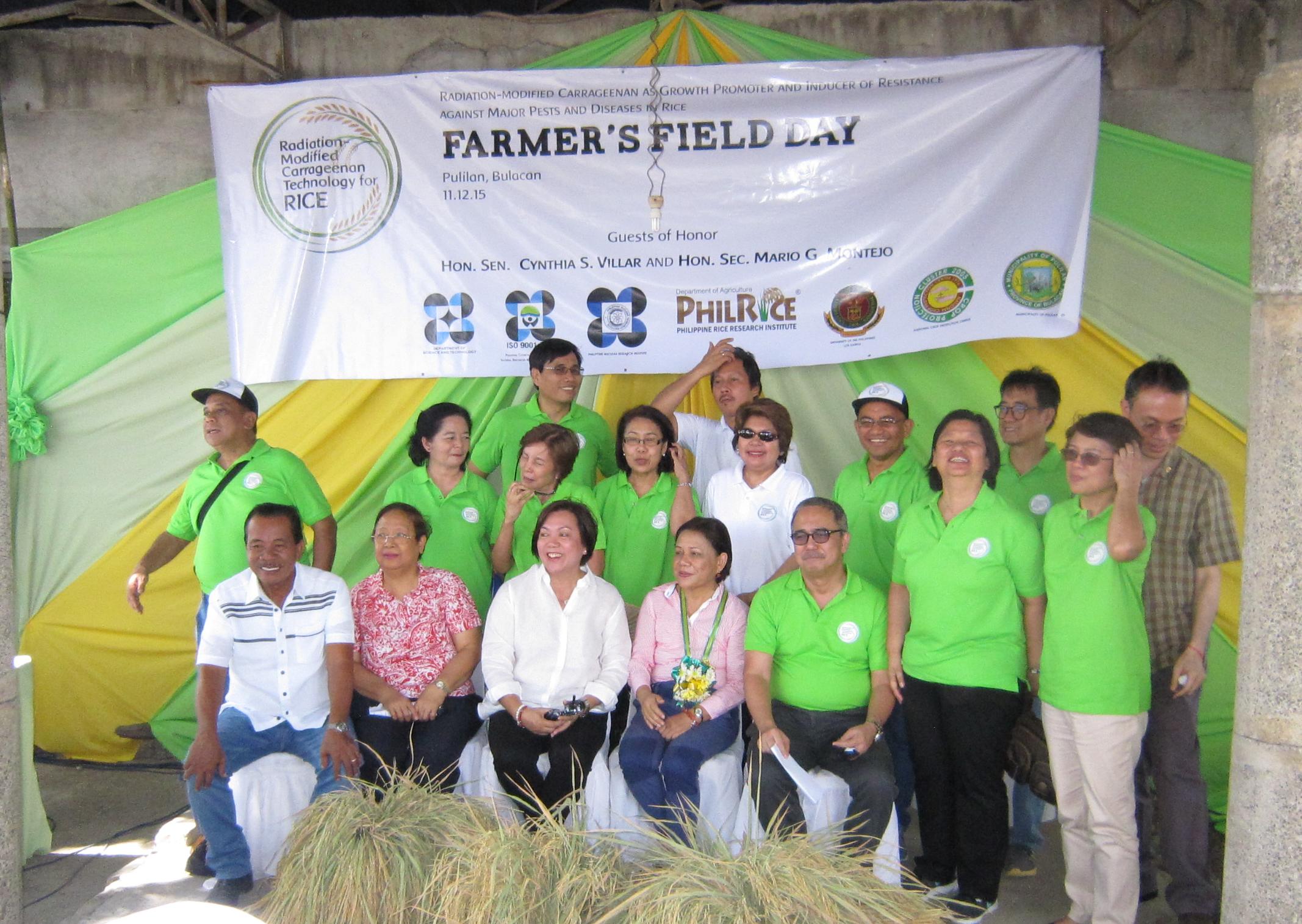
Plant Growth Promoters (PGPs) from carrageenan

The rice tungro experiments conducted at the University of the Philippines Los Baños

Senator Cynthia Villar (1st row, center), DOST Secretary Mario Montejo (1st row, 3rd from right), PNRI Director Dr. Alumanda Dela Rosa (2nd row, 3rd from left) and PNRI Chemistry Research Section Head Dr. Lucille Abad (1st row, 2nd from left) during the launching of the Plant Growth Promoters at the Farmer’s Field Day in Pulilan, Bulacan
PNRI Plant Growth Promoters Increase Rice Yield Up to 60%
Filipino farmers will soon be looking forward to a great harvest as radiation-modified Plant Growth Promoters (PGPs) can increase rice production to more than half the normal yield and protect them from infestation.
This breakthrough in Filipino agriculture was developed by scientists from the Department of Science and Technology – Philippine Nuclear Research Institute (DOST-PNRI) in cooperation with the National Crop Protection Center of the University of the Philippines – Los Baños (UPLB) and the Philippine Rice Research Institute (PHILRICE).
The scientists formulated these PGPs from radiation-processed natural polymers such as carrageenan, which is extracted from seaweed and processed into powder. Radiation-induced degradation of these polymers is used to develop natural bioactive agents. When degraded by radiation, polysaccharides yield oligosaccharides, or polymers with shorter chains. These oligosaccharides had been shown to have elicitor and plant-growth promoting properties.
For the past three years, the PGPs were being tested on rice farms in Nueva Ecija, Laguna and Bulacan. Results showed that with just around 3.2 liters per hectare of water mixed with the right proportion of PGPs, the crop yield of rice can be increased to around 60% compared to rice grown with normal farming practices. The field tests also demonstrated the improved resistance of rice applied with PGPs against the rice tungro bacilliform virus infestation as well as bacterial leaf blight.
Farmers can maximize the potential yield of their crops when using PGPs in conjunction with more efficient farming methods and proper timing. The PGPs are applied to the crops during three stages, the first during its early vegetative stage 12-14 days after transplanting, followed by a second application 16 to 22 days after the first stage (30-35 days after transplanting). The final batch of PGPs is best applied just before the flowering stage, 45-50 days after transplanting.
The PGPs for rice crops were officially launched on November 12 during the Farmer’s Field Day in Pulilan, Bulacan, with Senator Cynthia Villar and DOST Secretary Mario Montejo in attendance.












































